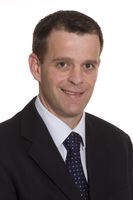I am a New Zealand trained gastroenterologist. I've experience in all areas of gastroenterology and completed my fellowship at the Royal Free Hospital in London in 2004.
His consulting rooms are at:
- Eastcare Specialist Centre
- Pukekohe Family Heath Care.
He performs gastroscopy and colonoscopy at:
I am an affiliated provider with Southern Cross for clinic consultations and for gastroscopy and colonoscopy procedures.
What is Gastroenterology?
Gastroenterology is the branch of medicine that looks at diseases of the oesophagus (gullet), stomach, small and large intestines (bowel), liver, gallbladder and pancreas.
The oesophagus is the tube that joins your mouth with your stomach. It is a muscular tube that contracts to push the food through when you swallow.
The stomach is where food is broken down by acid and emptied into your intestines. The stomach has special cells lining its wall to protect it from these acids.
The intestines consist of the small intestine (duodenum, jejunum and ileum – different sections of small intestine) and the large intestine (colon). As food passes through the small intestine, nutrients are broken down and absorbed. When it passes into the colon, water is absorbed. The waste that is left is passed as faeces (poo).
The liver is roughly the size of a football and is on your right side just under your ribs. It stores vitamins, sugar and iron which are used by cells in the body for energy. It also clears the body of waste products and drugs, produces substances that are used to help blood clot and aid the immune system, and produces bile which aids in digestion.
What is Endoscopy?
Endoscopy is the process of looking inside body cavities, using a very tiny camera attached to the end of a long, flexible tube (endoscope). Images from the camera are sent to a television monitor so that the doctor can direct the movement of the endoscope. It is also possible to pass different instruments through the endoscope to allow small samples or growths to be removed.
Endoscopy allows a doctor to make a diagnosis either by seeing directly what is causing the problem or by taking a small tissue sample for examination under a microscope (biopsy).
Endoscopy can also be used as a treatment e.g. for removal of swallowed objects in the oesophagus (food pipe), healing of lesions etc.

